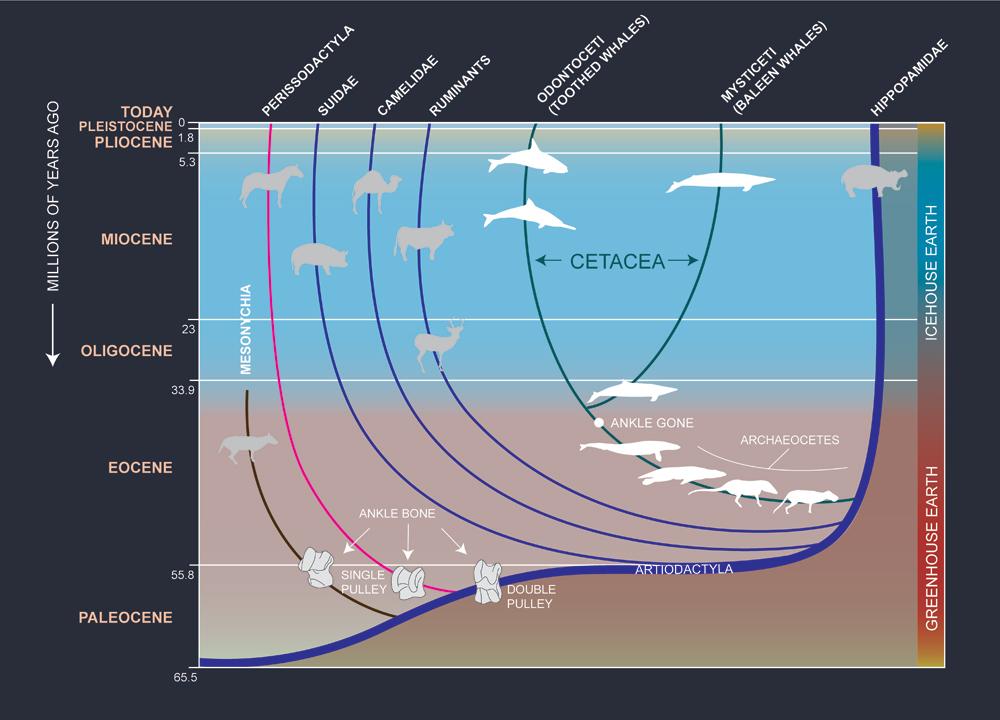>>A 39-million-year-old whale with floppy feet, which may not have been very good for walking, helps illuminate the massive animals’ transition to the oceans

“Modern whales use their tails to swim and have evolved vertebral columns, as well as back and abdominal muscles, to power the tail,” Uhen says. Aegicetus didn’t have these anatomical features, and it lacks the skeletal specializations to support a broad tail fluke. Instead, the whale probably swam in a way that would look strange to us, undulating its midsection and long tail while steering with the forelimbs, a creature right at the crux of a stunning evolutionary transformation.<<
https://www.smithsonianmag.com/science-nature/ancient-whale-fossil-helps-detail-how-mammals-went-walking-land-swimming-seas-180973758